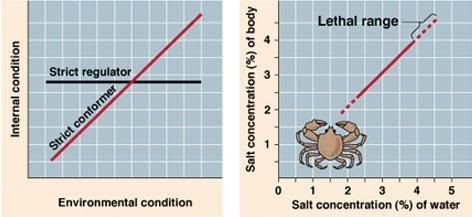Conformers and regulators
Negative feedback and thermoregulation
Conformers and regulators
Whether an organism works with its environment to keep its metabolism going, or works against the environment to do the same, determines whether its metabolism regulating approach, physiologically speaking, falls in the conformer or regulator category.
Conformers such as the largemouth bass do not invest as much energy into maintaining their metabolic environment (homeostasis), overarchingly governed by temperature regulation i.e. thermoregulation. They save this energy, but the downside is that their environmental niche is quite narrow. If they are to follow the right environment to maintain their metabolism, it’s likely they can’t go far and wide.
Regulators such as humans use energy for homeostasis, but have far greater freedom of location because the environment doesn’t dictate their ability to survive as much. Hence, their environmental niches open up and have a wider selection compared to conformers.

Environmental factors that contribute to their ability to survive include temperature, salinity and pH, and are called abiotic factors. Biotic factors would be competition and predation between organisms.
Negative feedback and thermoregulation
